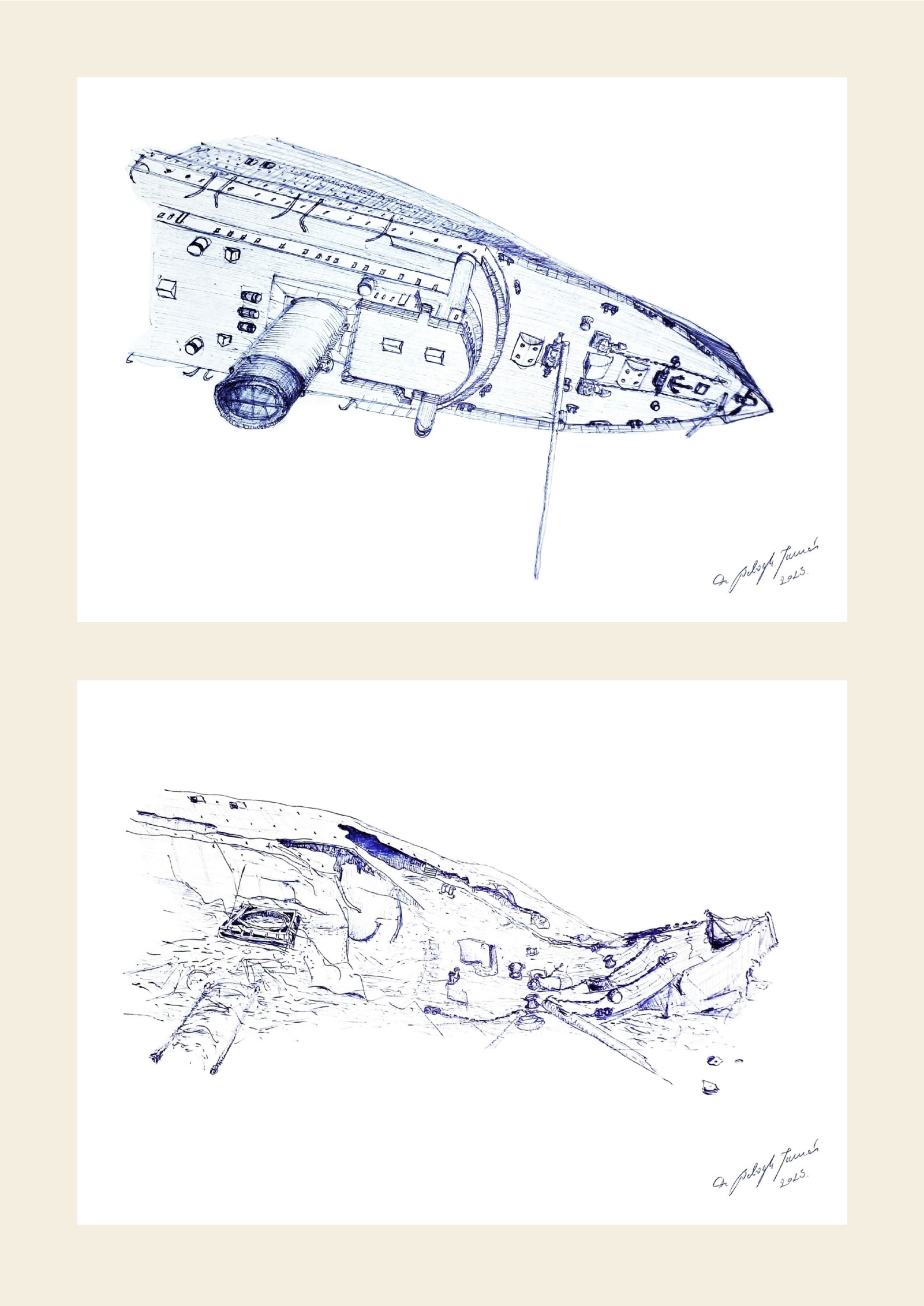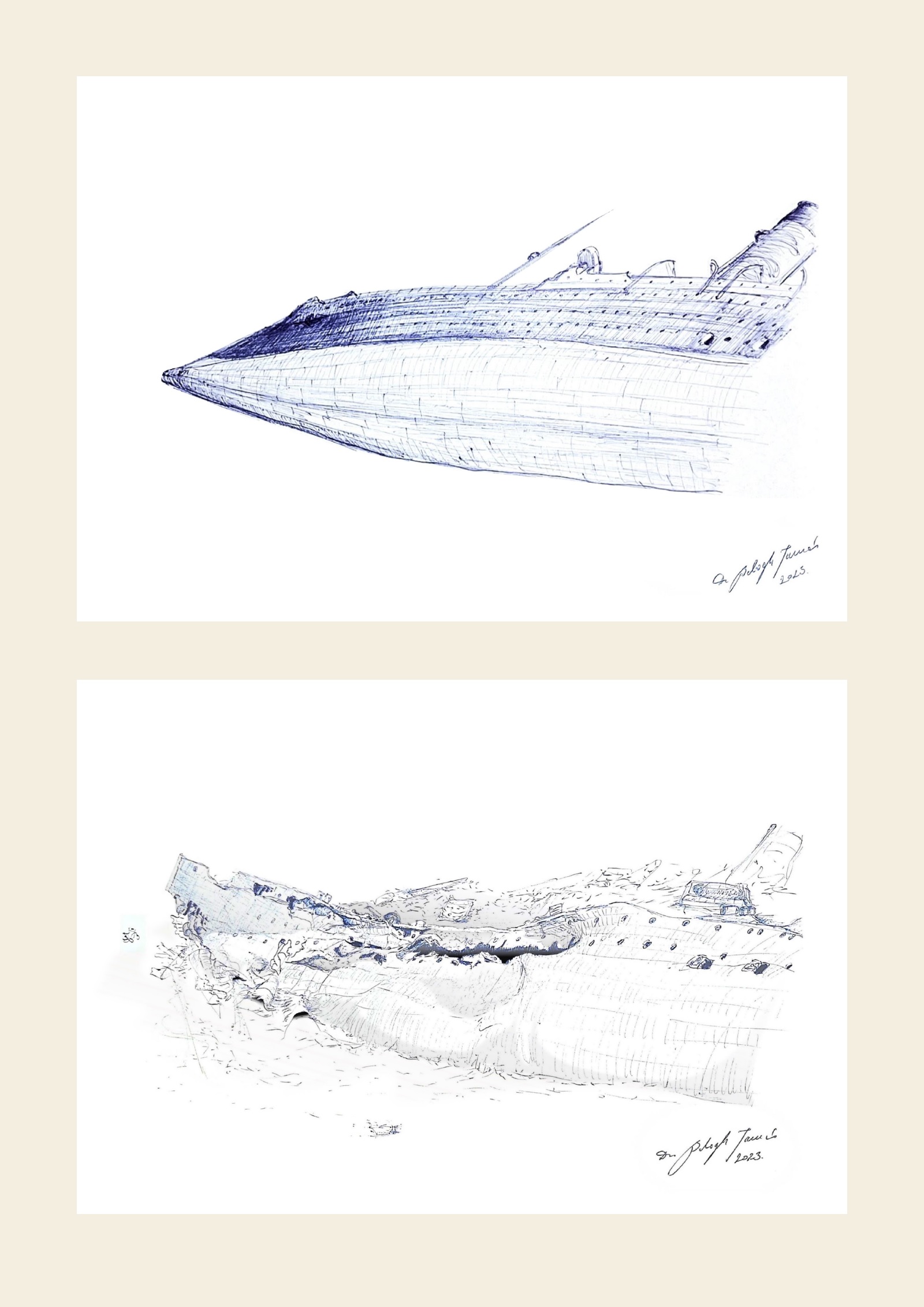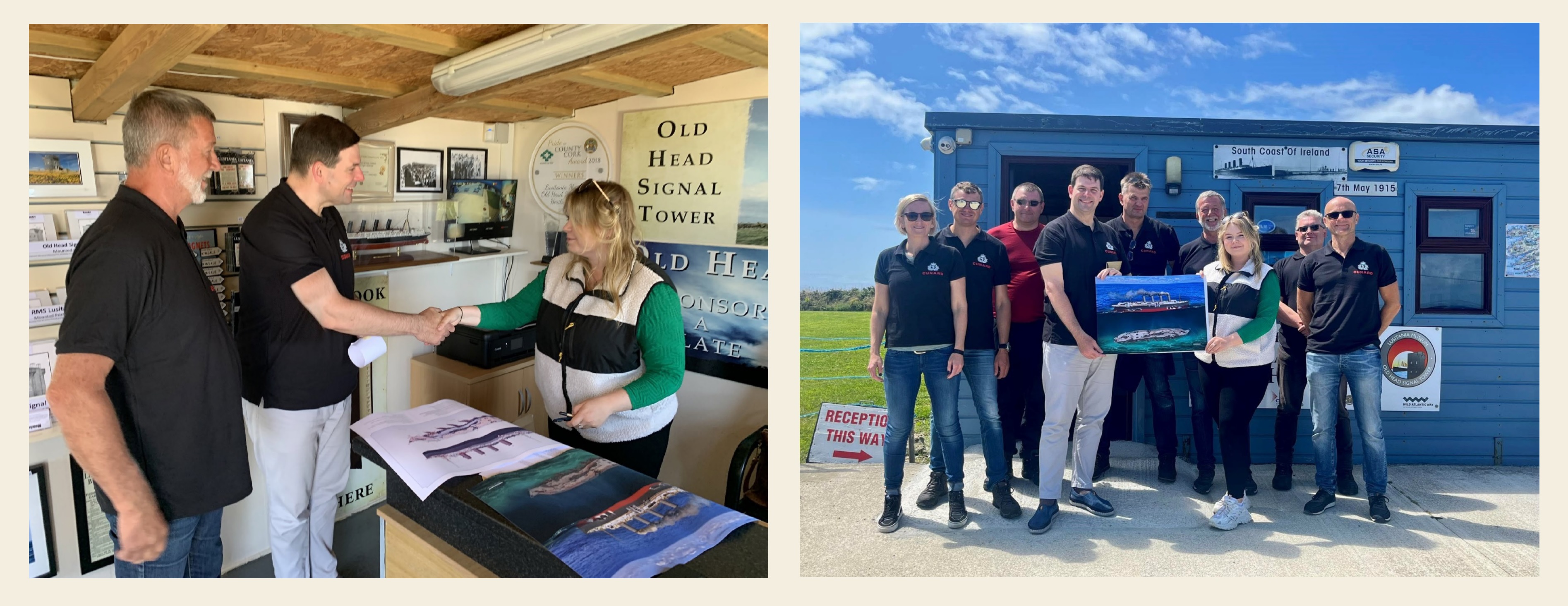The remains of the British giant steamer LUSITANIA, resting in the Atlantic Ocean, were visited again between July 13-21, 2023 by the the international expedition, which began in 2022, and was the first which had that most important task is the internal research of the areas affected by the explosion of the torpedo that sank the ship, and which for the first time in the history of the research of the wreck, included Hungarian members. On this occasion, the president of our association Dr. Tamás Balogh, who participated in the expedition by evaluating the underwater photoes and footage made by the divers, wrote an article, which can now be read on the website of the Hungarian edition of the National Geographic Magazine.
Fig. 1: LUSITANIA is on the cover.
An article summarizing the latest research results is available
in Hungarian here
in English here.
By comparing all of this with a similar report on the 2022 research, readers can get a complete over-all picture of the wreckage of the LUSITANIA.
Below we share some drawings made by hand on site during the expedition, which show the state of the ship's bow section in 1915, immediately after the sinking of the wreck, and today, in 2023, which was in the focus of the 2023 expedition.
Fig. 2: The bow of the LUSITANIA on the seabed as seen from the bow deck in 1915 (above) and in 2023 (below). Created by Dr. Tamás Balogh © 2023.
Fig. 3: The bow of the LUSITANIA on the seabed as seen from the bottom of the ship in 1915 (above) and in 2023 (below). Created by Dr. Tamás Balogh © 2023.
Fig. 4: The hull-section of the boiler room No 1. of LUSITANIA viewed from the top of the wreck (covered by the plates of the former port side) in 2023 (above) and the boilsers inside, "looking in" under the plates (below). Created by Dr. Tamás Balogh © 2023.
Fig. 5: An overview of the wreckage of the LUSITANIA seen from the bow in 2023. Created by Dr. Tamás Balogh © 2023.
Fig. 6: Tamás Balogh presents his images made of the LUSITANIA ocean liner and its wrecks to Shannon Forde, director of the Lusitania Museum & Old Head Signal Tower (owner o the wreck), in the company of the expedition leader, Stef Teuwen (left), and the ceremonial handing over of the images together with the members of the expedition in front of the ticket office of the Museum (right).
It would be great if you like the article and pictures shared. If you are interested in the works of the author, you can find more information about the author and his work on the Encyclopedia of Ocean Liners Fb-page.
If you would like to share the pictures, please do so by always mentioning the artist's name in a credit in your posts. Thank You!
Further secrets of the LUSITANIA in the National Geographic Magazine
2023.10.19. 21:22 Doki
3 komment
Címkék: underwater cultural heritage English balogh tamas wreck diving RMS Lusitania Ocean liners Encyclopedia of ocean liners
A bejegyzés trackback címe:
https://hajosnep.blog.hu/api/trackback/id/tr8618237423
Kommentek:
A hozzászólások a vonatkozó jogszabályok értelmében felhasználói tartalomnak minősülnek, értük a szolgáltatás technikai üzemeltetője semmilyen felelősséget nem vállal, azokat nem ellenőrzi. Kifogás esetén forduljon a blog szerkesztőjéhez. Részletek a Felhasználási feltételekben és az adatvédelmi tájékoztatóban.
Zhou Fang 2024.05.14. 20:09:48
The argument that the list could be caused by water passing from the boiler room to the starboard bunkers seems very tenuous. If the boiler rooms did flood, wouldn't the port bunkers also flood, resulting in no significant list? It would be a more plausible explanation if you found the port side bunker doors to be shut...
Zhou Fang 2024.05.14. 20:10:20
The argument that the list could be caused by water passing from the boiler room to the starboard bunkers seems very tenuous. If the boiler rooms did flood, wouldn't the port bunkers also flood, resulting in no significant list? It would be a more plausible explanation if you found the port side bunker doors to be shut...
Doki 2024.05.17. 10:52:27
@Zhou Fang: Please take ino account the initial list to starboard caused by the flooding after the torpedo explosion. This is enough to generate that effect explained in the article (and this is the cause behind why the portside bunkers flooded later, instead of the same time as the starboard side bunkers).






Utolsó kommentek